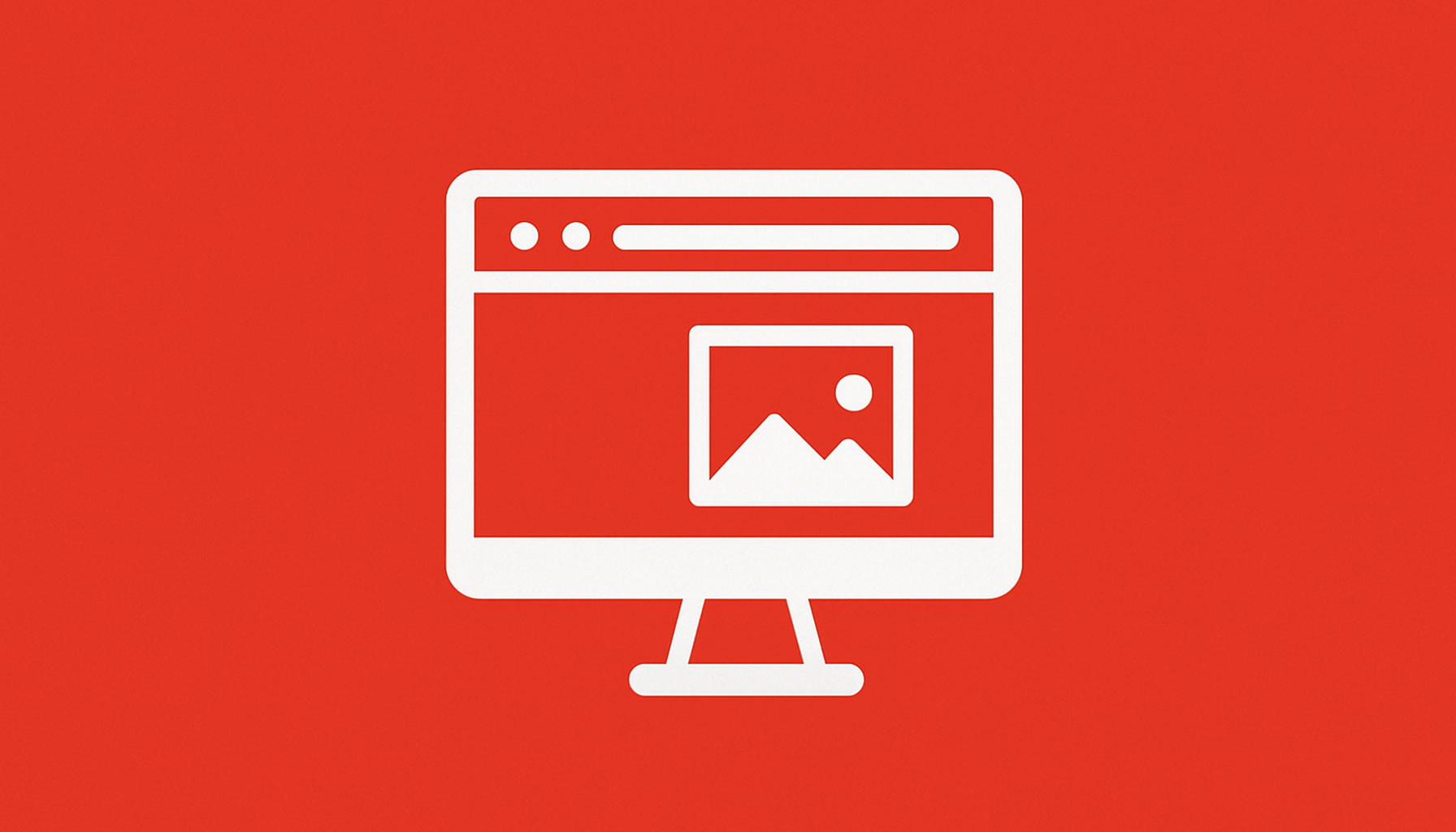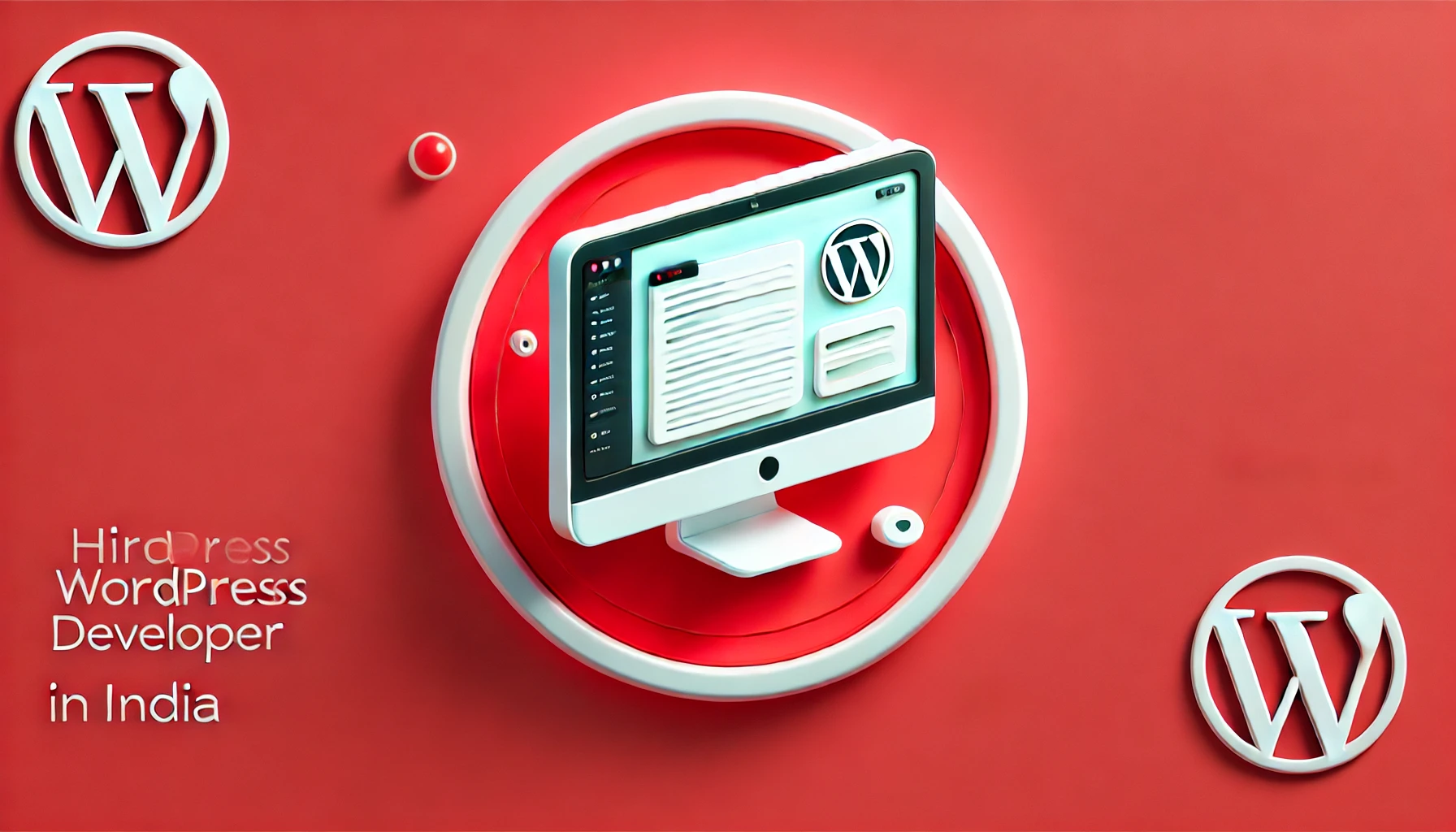In today’s digital era, where nearly every aspect of life is connected online, websites play a pivotal role in communication, business, and entertainment. However, the environmental cost of this vast digital landscape is significant. In 2025, with increasing concerns about climate change and sustainability, eco-friendly practices are more important than ever. Green Web Design focuses on creating websites that are not only user-friendly but also energy-efficient and sustainable, reducing the carbon footprint of the digital world.
As more businesses and consumers demand sustainability in all sectors, web designers are embracing eco-friendly practices. This article explores the principles of green web design and offers practical strategies to create websites that are both beautiful and sustainable.
What is Green Web Design?
Green Web Design refers to the creation of websites with the goal of reducing their environmental impact. The focus is on making websites more energy-efficient by optimizing their design, coding, hosting, and maintenance practices to minimize the use of resources. The core of green web design lies in sustainability—ensuring that websites use fewer server resources, load quickly, consume less energy, and are hosted in a way that relies on renewable energy.
Green web design practices are more than just a trend; they reflect a global shift toward more responsible and eco-conscious digital spaces. The aim is to make websites faster, lighter, and more efficient while using technologies that lower energy consumption and carbon emissions.
Why Green Web Design is Crucial in 2025
The need for green web design has never been more pressing. As digital consumption continues to surge, so does the environmental cost of running websites. Websites rely on servers to deliver content to users, and these servers are often powered by electricity generated from fossil fuels, contributing to carbon emissions.
- Environmental Impact: According to recent studies, the global tech sector accounts for approximately 4% of all greenhouse gas emissions. As websites become more complex with high-quality images, videos, and heavy scripts, the energy required to load and maintain them increases.
- Consumer Demand for Sustainability: Consumers today are more aware of environmental issues and increasingly choose brands and businesses that prioritize sustainability. This shift is influencing how businesses design their digital presence, making green web design not just a technical choice but a competitive advantage.
- Regulations and Accountability: Governments and international organizations are placing stricter regulations on digital industries to meet sustainability goals. By adopting green web design, businesses not only reduce their environmental footprint but also align with these evolving regulations.
Key Strategies for Green Web Design
Several strategies can help web designers and developers make their websites more eco-friendly.
Optimizing Website Performance
- Reducing File Sizes: One of the most effective ways to reduce a website’s energy consumption is by minimizing the file sizes of images, videos, and other assets. Compressed images, video optimization, and text-based content can significantly reduce load times and the amount of energy used by servers to serve these files.
- Efficient Coding Practices: Writing clean, efficient code can reduce the amount of server resources needed to render a website. This includes minimizing unnecessary lines of code and using efficient programming languages and frameworks.
- Lazy Loading: Lazy loading refers to loading content (images, videos, etc.) only when the user scrolls to it. This reduces the amount of data needed to load the page initially and decreases energy consumption.
Using Renewable Energy for Hosting
- Green Web Hosting Providers: Choosing a hosting provider that uses renewable energy sources (such as wind or solar power) is a critical step in creating an eco-friendly website. Green web hosts offset their carbon emissions by purchasing renewable energy or investing in carbon-reduction programs.
- Energy-Efficient Data Centers: The data centers that house websites’ servers play a crucial role in a website’s environmental impact. Energy-efficient data centers use advanced cooling techniques and better infrastructure to reduce the energy needed to run servers.
Sustainable Web Design Materials
- Eco-Friendly Themes and Templates: Many themes and templates used for website design are pre-built with optimization in mind. Choose templates that prioritize lightweight elements and efficient code.
- Choosing Green Technologies: Opting for technologies and platforms that focus on sustainability (such as lightweight content management systems like Ghost or static website generators) can reduce the digital footprint of a website.
Minimizing Data Storage
- Reducing Unnecessary Database Usage: Streamlining database queries, removing redundant content, and ensuring that data is stored efficiently can lower server load and energy consumption.
- Efficient File Management: Storing only necessary files and managing backups properly can prevent unnecessary storage needs that consume energy.
Design Principles for Eco-Friendly Websites
Minimalistic Design Approach
One of the simplest ways to reduce a website’s carbon footprint is by embracing minimalism. Websites with fewer elements, cleaner layouts, and less clutter not only provide a better user experience but also load faster, requiring less server power and bandwidth. Minimalism in design leads to fewer images, smaller file sizes, and faster load times—all of which contribute to energy savings.
Eco-Friendly Color Schemes
Interestingly, the choice of color can also affect energy consumption, particularly with OLED and AMOLED screens that consume less energy when displaying darker colors. Using darker background colors and avoiding bright, high-energy colors can help reduce power consumption on mobile devices and energy-efficient screens.
User Experience (UX) Design Considerations
Good UX design can improve energy efficiency by ensuring that a website loads quickly and operates smoothly. This includes optimizing navigation, simplifying interactive elements, and ensuring the site is responsive across devices. Faster load times mean less energy is used to load the content, which is essential for a greener web experience.
Sustainable Web Development Tools and Resources
To make green web design more accessible and effective, there is a wide range of tools and resources available to web designers and developers. These tools help optimize website performance, measure environmental impact, and connect professionals in the green web design community. Here’s a detailed look at some of the key tools and platforms you can utilize:
Green Design Tools
Effective web performance optimization is a cornerstone of green web design. Tools that measure and improve website efficiency are essential for reducing energy consumption and improving user experience. A few of the top green design tools include:
- WebPagetest: WebPagetest is a free and open-source tool that allows developers to test website performance from different locations around the world. It offers detailed reports on the time it takes for a page to load and provides suggestions on how to optimize the site’s speed. The faster a website loads, the less energy it requires, reducing its carbon footprint. WebPagetest can help identify slow-loading assets such as large images, heavy scripts, or excessive third-party content that could be optimized to enhance performance.
- Lighthouse: Lighthouse is an open-source tool developed by Google that audits web pages for performance, accessibility, SEO, and other best practices. It generates reports that offer actionable recommendations for reducing resource consumption, improving performance, and enhancing overall site usability. For green web design, Lighthouse’s performance audits help ensure that websites are efficient and optimized for fast loading, which can lower energy usage and improve website sustainability.
- GTmetrix: GTmetrix combines data from Google PageSpeed Insights and WebPagetest to give an in-depth analysis of a website’s loading speed and performance. It provides valuable suggestions for optimization, such as reducing server response times, leveraging browser caching, and optimizing images. GTmetrix’s focus on performance helps web designers create websites that are faster to load, require less bandwidth, and ultimately use less energy.
By using these tools, web designers can ensure that their websites perform efficiently, which directly contributes to sustainability by reducing server load, energy usage, and resource consumption.
Carbon Footprint Calculators
One of the most critical aspects of green web design is measuring the carbon footprint of a website. Carbon footprint calculators are specialized tools that allow web designers and businesses to quantify the environmental impact of their websites and track improvements over time. Some popular calculators include:
- Website Carbon Calculator: This tool helps you measure the carbon emissions of your website. By inputting your website’s URL, you can instantly get an estimate of the carbon footprint associated with the site’s energy consumption. The Website Carbon Calculator factors in various elements such as server energy use, data transfer, and page load time. It also provides insights on how to reduce your site’s carbon emissions by optimizing images, reducing file sizes, and using energy-efficient hosting.
- Carbon Footprint API by SiteImprove: This API allows web developers to assess the sustainability of their websites through a combination of performance data and environmental impact metrics. By integrating the API into development workflows, designers can track how changes to a website (like optimizing media files or reducing HTTP requests) directly influence its carbon footprint.
- Ecograder: Ecograder is a tool that grades websites based on their environmental impact. It assesses the site’s performance, energy consumption, and its carbon footprint based on various factors. Ecograder provides actionable tips on how to reduce environmental impact by simplifying website structure, improving server efficiency, and using sustainable hosting solutions.
Carbon footprint calculators help web designers understand the specific environmental impact of their websites and provide insights into how to reduce that impact. By regularly using these calculators, designers can track progress and continuously improve their websites’ sustainability.
Eco-Friendly Communities and Platforms
Being part of a green design community or platform can provide invaluable resources, connections, and support for web designers looking to implement sustainable practices. These platforms help foster collaboration among designers and developers who share a common goal of creating more eco-friendly digital experiences. Some noteworthy communities and platforms include:
- The Green Web Foundation: The Green Web Foundation is a leading nonprofit organization dedicated to helping people and organizations create greener websites. They offer a wealth of resources, including a Green Web Directory, which lists hosting providers that use renewable energy. The foundation also provides guides on how to make websites more sustainable, support for implementing eco-friendly hosting, and insights into how designers can reduce the environmental impact of their websites. The Green Web Foundation’s network of eco-conscious professionals offers opportunities for collaboration and knowledge-sharing.
- Sustainable Web Design (SWD): Sustainable Web Design is an online community and platform focused on promoting green web design practices. It offers a range of resources, including articles, best practices, and a newsletter that keeps designers up to date with the latest trends in sustainability. The platform also hosts events and webinars that bring together web professionals to discuss the importance of green web design and share practical solutions for reducing environmental impact.
- Green Hosting Communities: Many green hosting providers offer online forums or communities where designers and developers can exchange ideas and best practices for building sustainable websites. These communities often include tips on choosing eco-friendly hosting, optimizing website performance, and incorporating sustainable technologies into web development workflows. Providers like Kinsta and A2 Hosting are known for their environmentally conscious approach and can connect designers to resources and advice on green web design.
- Carbon Footprint Awareness Groups: As part of the wider sustainability movement, many digital professionals join online communities such as Climate Action Tech or Tech for Good to collaborate on climate-focused projects. These platforms offer forums, events, and collaborations for individuals interested in making the tech industry more sustainable. Participating in such groups can help web designers stay engaged with the latest sustainability initiatives and discover new ways to make their websites more eco-friendly.
Joining these communities enables web designers to tap into a wealth of knowledge, share experiences, and find new ways to implement green web design principles. Networking with like-minded professionals helps accelerate the adoption of eco-friendly practices across the industry and can inspire more innovative solutions to reduce the environmental impact of websites.
By leveraging these green design tools, carbon footprint calculators, and eco-friendly communities, web designers can build websites that not only meet user expectations but also contribute to a more sustainable digital landscape. As the demand for environmentally responsible design continues to grow, these resources provide essential support to those committed to making a difference in the digital world.
Case Studies of Successful Green Web Design
As the world shifts toward sustainability, several companies and organizations have successfully adopted green web design practices, proving that reducing environmental impact and optimizing website performance can go hand-in-hand. Below are a few notable examples that highlight how green web design principles can be integrated into real-world projects, benefiting both the environment and the brand.
The Green Web Foundation
The Green Web Foundation is an excellent example of a company that has embedded sustainable practices into the very fabric of its digital presence. Their website serves as a model for green web design, following the foundational principles of energy efficiency and minimal environmental impact.
- Simplicity and Fast Loading: The Green Web Foundation’s website is designed with simplicity in mind. It prioritizes a clean, minimalistic layout with only the essential content, which reduces the number of assets needed to load the site. Fewer elements lead to faster load times and less server energy consumption, aligning perfectly with sustainable design principles.
- Optimized Content: The website features optimized images and compressed files to ensure that the content loads quickly without using excessive data. This means fewer resources are required to deliver the page to the user, resulting in a reduced carbon footprint.
- Eco-Friendly Hosting: The Green Web Foundation hosts their site with providers who use renewable energy sources, ensuring that their online presence doesn’t contribute to the consumption of fossil fuels. By promoting green hosting providers, the foundation actively supports the global transition to cleaner energy.
- Educational Resources: The Green Web Foundation also uses its platform to educate other businesses about how to reduce their environmental impact through their websites, offering tools like the Green Web Directory to find eco-friendly hosting providers and resources for better sustainability practices. This educational aspect reinforces their commitment to sustainability.
The Green Web Foundation’s website demonstrates that sustainable web design doesn’t have to be complicated or costly. By keeping it simple, optimizing assets, and choosing the right hosting, they’ve created a site that both reduces its carbon emissions and spreads awareness about eco-friendly practices.
Patagonia
As a well-known leader in environmental activism, Patagonia has taken a holistic approach to sustainability across its brand, and this extends to its website design. The company has incorporated green web design practices that support its mission to protect the planet while also enhancing user experience and site performance.
- Minimal Images and Efficient Code: Patagonia’s website is intentionally minimal, using a select number of images and graphics. By reducing the number of high-resolution visuals and optimizing those that are used, Patagonia keeps its website fast and energy-efficient. This ensures that users spend less time waiting for the site to load, which reduces the energy consumption of both the site and the user’s device.
- Optimized Media: The brand carefully selects the media used on its website, ensuring that video and image files are compressed without compromising quality. This minimizes bandwidth usage, reducing the carbon footprint associated with media-heavy pages.
- Sustainability Messaging: Patagonia’s commitment to environmental sustainability is reflected in the website’s content and design. They use their platform not only to promote products but to inform users about sustainability efforts, such as recycled materials, fair labor practices, and environmental initiatives. This messaging aligns with the green web design strategy by embedding eco-conscious principles directly into the design.
- Green Hosting and Renewable Energy: Patagonia utilizes green hosting solutions that run on renewable energy sources, ensuring that the website’s infrastructure aligns with its broader environmental goals. By choosing hosting providers that prioritize sustainability, the company further reduces its carbon footprint.
Patagonia’s website is a prime example of how a large-scale company can embrace sustainable web design practices. Their focus on efficient coding, minimalistic design, and environmentally friendly hosting showcases their commitment to both reducing their environmental impact and enhancing their brand reputation as an eco-conscious leader.
The EPA’s Green Web Page
The U.S. Environmental Protection Agency (EPA), a government organization that plays a pivotal role in promoting environmental protection, has also embraced green web design principles. Their Green Web Page serves as a comprehensive resource to inform the public about environmental sustainability while practicing what they preach through the use of energy-efficient web design.
- Energy Efficiency: The EPA’s Green Web Page is optimized for performance, ensuring that users can access information quickly and efficiently without unnecessary delays. The website avoids heavy images and large files that could slow down loading times, reducing the amount of energy needed to deliver the content to users.
- Optimized Content: The content is structured in a way that minimizes the website’s digital load, with streamlined text and efficient coding that ensures fast rendering. By focusing on a minimalist approach, the EPA’s website reduces server requests, improving both speed and energy efficiency.
- Green Hosting: In line with their mission, the EPA has chosen to host the Green Web Page with a provider that uses renewable energy, ensuring that the server infrastructure running the website is powered by clean sources. This eco-friendly hosting solution aligns with the agency’s environmental goals and reduces the carbon footprint of the site’s operations.
- Educational Impact: Beyond just being a model of green web design, the EPA’s Green Web Page serves as an educational tool, showcasing the potential benefits of eco-friendly web practices. The website includes detailed information on how sustainable web design can help organizations reduce their environmental impact, making it a valuable resource for businesses and developers looking to adopt similar practices.
By integrating energy-efficient practices and utilizing green hosting, the EPA’s Green Web Page provides a real-world example of how government agencies can implement sustainable web design while simultaneously promoting green initiatives to a broader audience.
The Takeaways from These Case Studies
The case studies above illustrate the significant environmental benefits that can be achieved through green web design. Each organization has adopted sustainable practices that reduce energy consumption, lower carbon emissions, and enhance the user experience. Here are some key takeaways:
- Simplicity and Optimization: Websites that focus on simplicity and efficient design tend to perform better and require fewer resources. By reducing the number of assets and optimizing files, companies can create faster, more energy-efficient websites.
- Eco-Friendly Hosting: Green hosting is a fundamental part of sustainable web design. Whether through renewable energy sources or energy-efficient data centers, hosting plays a critical role in reducing the environmental impact of a website.
- Educational and Promotional Benefits: Implementing green web design practices not only reduces a company’s environmental footprint but also enhances its brand image as a responsible, eco-conscious organization. Websites like Patagonia and the EPA use their platforms to educate the public and promote sustainability efforts, furthering their environmental goals.
- Continuous Improvement: Each of these case studies demonstrates the importance of continuous monitoring and optimization. By using green design tools and carbon footprint calculators, companies can track the environmental impact of their websites and implement improvements over time.
These successful case studies show that sustainable web design isn’t just a trend—it’s a smart, responsible choice for companies looking to make a positive environmental impact while also offering a seamless user experience.
The Future of Green Web Design
As we move further into 2025 and beyond, green web design will continue to evolve. Several emerging trends are poised to make an even greater impact:
- AI and Machine Learning: These technologies are already being used to optimize website performance by predicting traffic patterns and dynamically adjusting server loads, ultimately reducing energy consumption.
- Blockchain for Sustainability: Blockchain technology can offer decentralized and transparent solutions for monitoring carbon emissions in real-time, allowing companies to more accurately track and reduce their environmental impact.
- Increased Regulation and Incentives: As governments around the world tighten regulations on digital industries, companies that adopt green web design practices early will be better positioned to comply with new laws and potentially benefit from tax incentives.
Conclusion
Creating eco-friendly websites is no longer just a trend—it’s a necessity. As the digital world continues to grow, so too does the environmental impact of our online activities. Green web design allows us to reduce our carbon footprints while still delivering high-quality, user-friendly websites. By optimizing performance, using renewable energy hosting, and embracing minimalist design principles, we can create websites that not only perform better but also contribute to a healthier planet.
Web designers and developers in 2025 must take responsibility for their digital creations and adopt sustainable practices. By doing so, they can help ensure that the future of the web is as green as it is innovative.





